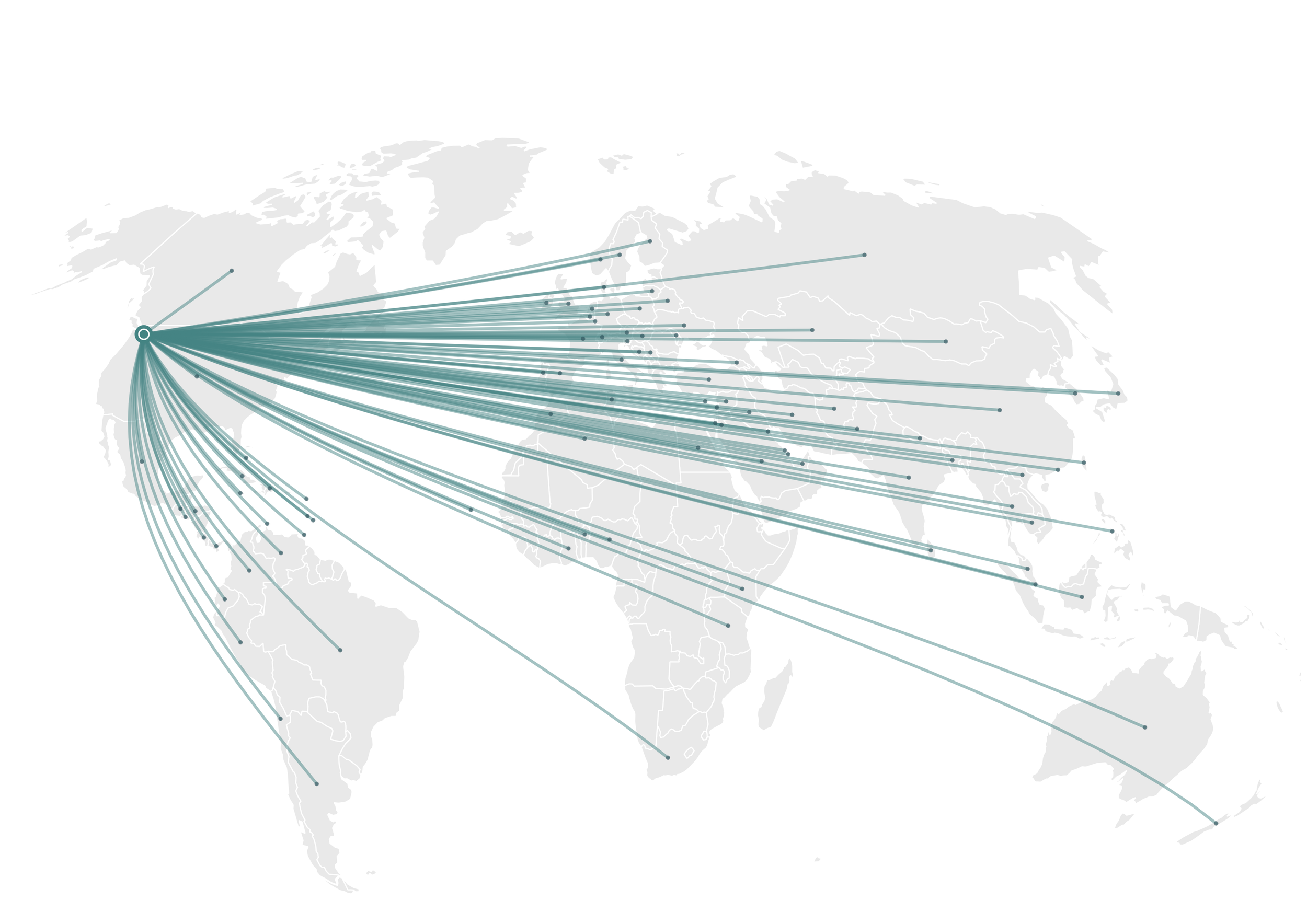Outdoor Recreation on State Lands in Washington: What Mobile Device Data Reveal About Visitation | 2022
Over 18.8 million acres of Washington State are public lands—6.5 million of which are managed by state agencies—offering both residents and tourists opportunities to camp in old-growth forests, fish for wild salmon, hike to breath-taking lookouts, and more. Effective recreation management relies on a robust understanding of the scale of visitation and the benefits to local communities, which also highlights the importance of investing in their maintenance.
In 2020, Earth Economics published an “Economic Analysis of Outdoor Recreation in Washington State” that quantified visitor volume, spending, jobs, and tax contributions supported by outdoor recreation throughout the state. Building on this analysis, the Washington Department of Fish and Wildlife (WDFW), Washington State Department of Natural Resources (WDNR), Washington State Parks and Recreation Commission (Parks), and Washington State Recreation and Conservation Office (RCO) tasked Earth Economics with a focused assessment of the total visitation, consumer spending, and economic output associated with outdoor recreation on state-managed lands.
This analysis improves significantly on earlier efforts by leveraging voluntarily provided mobile device locational data throughout 2019 and 2020 to generate data-driven estimates of the total economic contribution of visitors to state-managed recreation lands, detailed at more granular geographic and temporal scales.
Results
State lands supported an estimated 78 million visitor days in 2019, which increased to 87 million in 2020. Overall visitation increased 12 percent in that time, with WDNR seeing the largest estimated increase in visitation—a 21 percent increase from 2019 to 2020. Just over half of visits in 2019 were day trips; by 2020, this proportion increased to 66 percent, likely due to the COVID-19 pandemic.
The anonymized locational data also provides insight into the distances visitors traveled. Roughly 30 percent travelled more than 50 miles to visit state lands. Of those non-local visitors, nearly two-thirds stayed overnight within the management unit or local area.
State-managed recreation lands are of considerable importance to the state economy:
Estimated visitor expenditures totaled about $3 billion from 2019 to 2020.
Total spending associated with outdoor recreation on state recreation lands supported goods and services (directly and indirectly) worth a total of $5.9 billion.
Annual visitor expenditures and the economic activity they generate support 37,600 full- and part-time jobs, and $1.65 billion in wages in the state.
Spending by visitors to state recreation lands contributed to more than $435 million in local and state tax revenue.
Estimated Visitor Days to State Recreation Lands, 2019 to 2020
Estimated Total Output Derived from Spending by Visitors to State Recreation Lands, 2019 to 2020
Origins of International Mobile Devices on Washington State Recreation Lands
© 2022 Earth Economics. All rights reserved.





